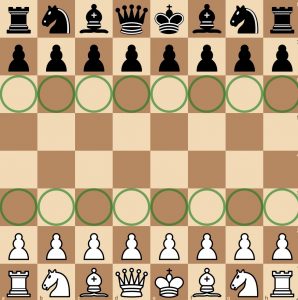Castling is one regarding the most important special moves within chess. It is usually an unique, intriguing, and essential move to understand. There will be lots of rules to follow in order to castle correctly, but possess no fear: that they are an easy task to find out!
What Is Castling?
Castling is the special move inside chess to do multiple unique steps. First of almost all, it is the only shift to may move two pieces in the same transfer! Secondly, castling will be the only time in chess when this is legal to be able to move the california king more than one particular square! Third, it is the sole move that each develops your rook and protects your current king. Castling may be performed around the kingside (notated as 0-0) or queenside (notated as 0-0-0).

You must become wondering, how carry out we castle? Why don't find out!
Exactly how Do You Fortress?
Castling involves typically the king and a rook. As mentioned, there are a lot of rules to castling: The very first is that a person may only fort if you havenât moved your king along with your rook (on the side where you want to castle). The second concept is the fact that no item could be between your own king along with the rook on the side where you want them to fort. In the diagram under, you observe that nothing is between White's king on e1 and White's rook on h1.
Occasionally the first a couple of conditions (no bits are between typically the king and rook, and neither typically the king nor rook has become moved) are usually satisfied, but we all are still unable to castle. Here are three additional guidelines of castling:
If you are in balance, you cannot castle. You first have to get away of check one which just do anything. Throughout the diagram beneath, the bishop in b4 puts the white king is usually in check, and so White is not able to castle.
You cannot castle when any square the particular king is shifting through is bitten by your adversary's pieces. In the diagram below, typically the white king cannot castle kingside since Black's bishop upon a6 attacks the f1-square.
You can not fort into check. This specific rule is straightforward to be able to remember, since entering into check is unlawful in the first place! In the particular diagram below, the white king are not able to castle because Black's bishop on handset attacks the g1 square.
https://hask-sah.com to keep in mind these rules involving castling = an individual cannot castle out and about of, through, or even into check!
Why Is It Important To Castle?
Now that you know how and once an individual can perform this particular special move, many of us can discuss exactly why it is thus important. Castling becomes your king away of the centre and protected by pawns. Castling likewise lets your rook in the game.
Notice how White's california king is incredibly safe in g1 and is definitely protected from the f2, g2, and h2 pawns. We can furthermore see that castling has connected the white rooks, which can now coordinate much better. Getting your california king out of the center to be able to safety while in addition having a rook is usually a great buy-one-get-one-free move! By eliminating your king from the center, you prevent a lot of quick checkmates!
Realization
You now know very well what castling is, the way to castle, when you can castle plus why it is vital. Use this new information in your individual games, and could the king remain safe and even your rooks lively!
